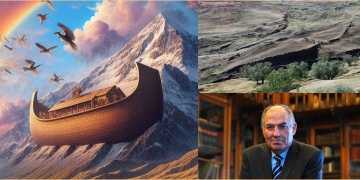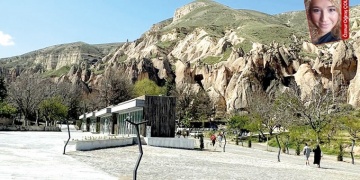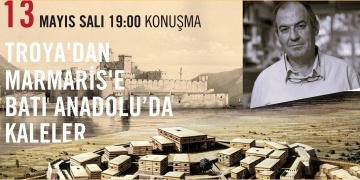Fortification wall surrounding ancient Mayan city of Uxmal uncovered. The wall must be built thousands of years ago to protect the ancient Mayan community from invaders.
A nearly two-mile-long wall surrounds Uxmal, and a close look at it tells a story, said the director of the archaeological site in Yucatan.
Jose Huchim Herrera said the wall was built thousands of years ago to protect the ancient Mayan community from invaders.
Although documented in the 19th century, today it is buried in jungle thicket. But INAH has taken an interest in the structure and has begun to study and plan its restoration.
Huchim and an assistant used machetes to cut through the brush to reveal the wall to a group that included a La Jornada Maya reporter.
The archaeologist and an assistant easily sliced through the brush to reach a stretch of wall, despite the day’s humidity and heat. At times they had to stop and wait for the fatigued guests who had lagged a little behind, the Jornada reporter observed.
Not even half of Uxmal’s ruins have been discovered by modern-day researchers, said Huchim, and the city’s ancient secrets continue to reveal themselves.
Elsewhere in Uxmal, work began in July on the restoration of the base of the Governor’s Palace, one of the most emblematic and beautiful archaeological vestiges of Mayan culture. That project is expected to be completed in five months.
Evidence of a fortress wall surfaced in 1841 when a drawing appeared in John Stephens’ “Incidents of Travel in Central America, Chiapas, and Yucatan.” Only recently, however, did researchers set out to find the wall again.
The wall had several purposes, said Huchim. Not only did it delimit Uxmal’s territory and serve to repel enemies, it also defined the status of its inhabitants, since only the ruling elite lived within the wall. The wall had 20 well-defined entry points, as well as several rainwater tanks.
Parts of the wall show evidence of hasty construction, indicating imminent danger from invaders.
“There was a time of war, probably with Chichen Itza,” said Huchim.
Mayan settlements in Mayapán, Chichen Itza and Tulum were also walled in, he said.
Source: La Jornada Maya








 Ağrı Dağı'ndaki Nuh'un Gemisi oluşumu nasıl keşfedildi, dünyaya nasıl tanıtıldı?
Ağrı Dağı'ndaki Nuh'un Gemisi oluşumu nasıl keşfedildi, dünyaya nasıl tanıtıldı?  Bizanslı Kadınlarla Osmanlı Kadınları benzer kaderlere sahipmiş!
Bizanslı Kadınlarla Osmanlı Kadınları benzer kaderlere sahipmiş!  Zelve problemi: Önce turizm mi kayrılmalı yoksa kültürel ve doğal miras mı korunmalı?
Zelve problemi: Önce turizm mi kayrılmalı yoksa kültürel ve doğal miras mı korunmalı?  ASKEV - SERA Ayvalık'ı Arkeoloji Sohbetleri ile buluşturmaya 13 Mayısta başlıyor
ASKEV - SERA Ayvalık'ı Arkeoloji Sohbetleri ile buluşturmaya 13 Mayısta başlıyor 




